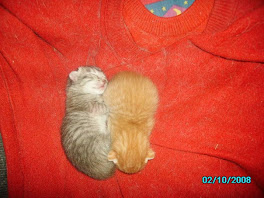Synchronous CMC, Working Memory, and L2 Oral Proficiency Development.
J. Scott Payne & Brenda M. Ross
The Pennsylvania State University
This study is about how individual differences in working memory may affect the frequency of repetition of language use in chatroom discourse.
“Speaking is improved by practice speaking” (Scott & Ross, 2005)
“Student often produce more language in a chatroom than F2F setting” (Abrams, 2003; Kern, 1995; Worschower, 1996)
In this study the researchers showed a lot of different related studies that demonstrated the importance of being exposure to the L2. Also they mentioned the errors that these researchers made in order that does not mean that was a bad investigation but to say that in these kind of investigation you have a lot of variables that can change the whole investigation.
The main purpose if this research was to examine the patterns of language use as evidence in the chat transcript (that they mentioned before (experimental groups only)) with the goal of better understanding the interplay between individual differences in working memory capacity and cross-modality transfer of skill, as I mentioned before, from chatting to oral proficiency development.
In the research they asked to the student to talk about and discuss the topics that they gave them and the most popular were: Talking about childhood memories and plans for the future, also they asked to the student to talk for 5 minutes long and if they could not do that they asked them to choose a new topic and star all over again.
With these kind of exercises they achieve first, the use of repetition and relexicalization by third-semester Spanish learners as a strategy to facilitate communication in L2 chatroom discourse, but this declined in frequency over time, an effect that was unrelated to working memory capacity also they expand their lexicon and become more proficient in producing language spontaneously as required for conversational exchange, they reduce their reliance on repetition as a strategy for maintaining continuity in discourse.
Conclusion
In this study you can see an initial attempt at using working memory and their relation to L2 oral proficiency development and the findings of this lend further support to the notion that the chatroom may provide a unique form of support to certain types of learners in developing L2 oral proficiency.
J. Scott Payne & Brenda M. Ross
The Pennsylvania State University
This study is about how individual differences in working memory may affect the frequency of repetition of language use in chatroom discourse.
“Speaking is improved by practice speaking” (Scott & Ross, 2005)
“Student often produce more language in a chatroom than F2F setting” (Abrams, 2003; Kern, 1995; Worschower, 1996)
In this study the researchers showed a lot of different related studies that demonstrated the importance of being exposure to the L2. Also they mentioned the errors that these researchers made in order that does not mean that was a bad investigation but to say that in these kind of investigation you have a lot of variables that can change the whole investigation.
The main purpose if this research was to examine the patterns of language use as evidence in the chat transcript (that they mentioned before (experimental groups only)) with the goal of better understanding the interplay between individual differences in working memory capacity and cross-modality transfer of skill, as I mentioned before, from chatting to oral proficiency development.
In the research they asked to the student to talk about and discuss the topics that they gave them and the most popular were: Talking about childhood memories and plans for the future, also they asked to the student to talk for 5 minutes long and if they could not do that they asked them to choose a new topic and star all over again.
With these kind of exercises they achieve first, the use of repetition and relexicalization by third-semester Spanish learners as a strategy to facilitate communication in L2 chatroom discourse, but this declined in frequency over time, an effect that was unrelated to working memory capacity also they expand their lexicon and become more proficient in producing language spontaneously as required for conversational exchange, they reduce their reliance on repetition as a strategy for maintaining continuity in discourse.
Conclusion
In this study you can see an initial attempt at using working memory and their relation to L2 oral proficiency development and the findings of this lend further support to the notion that the chatroom may provide a unique form of support to certain types of learners in developing L2 oral proficiency.








No comments:
Post a Comment